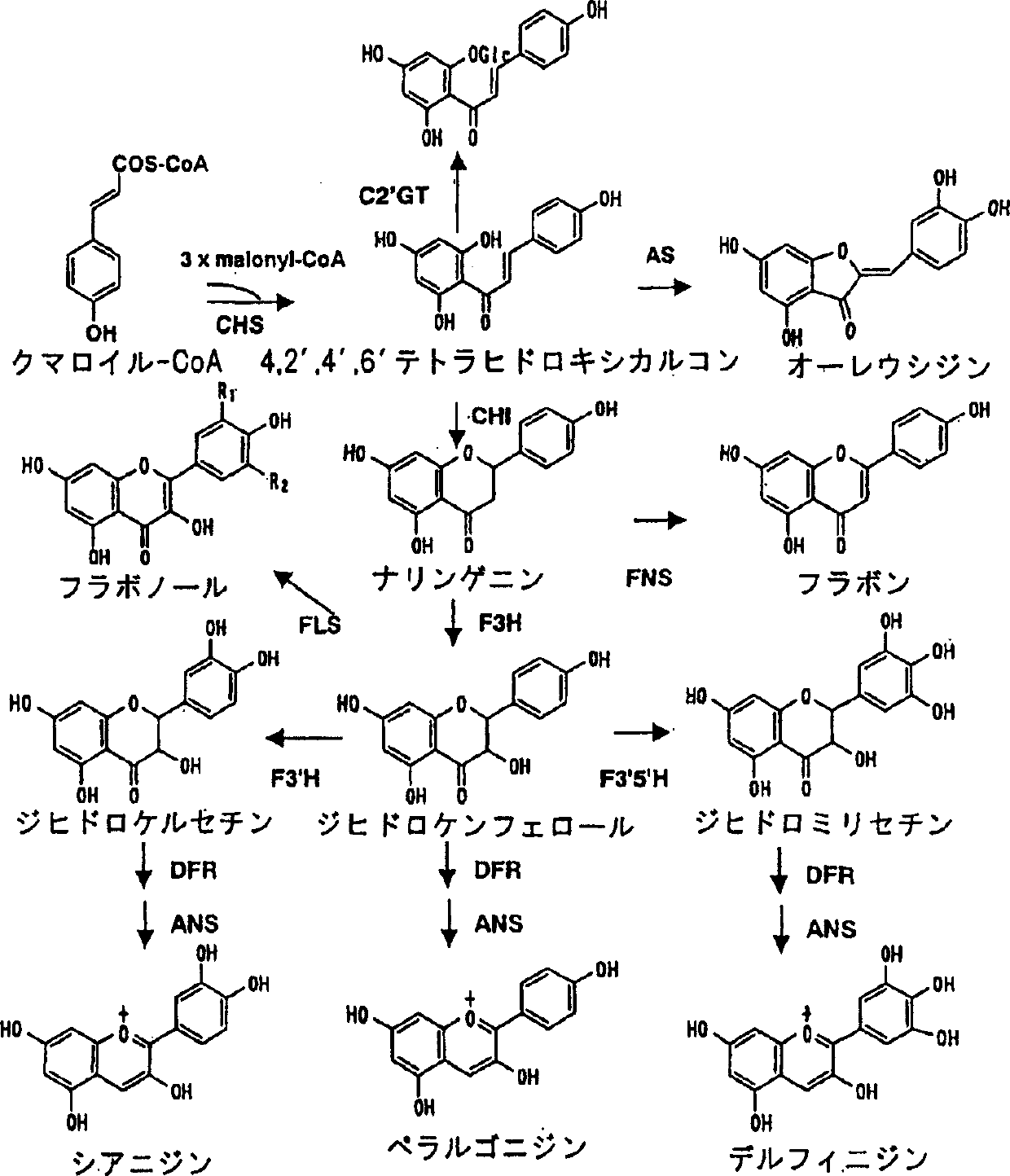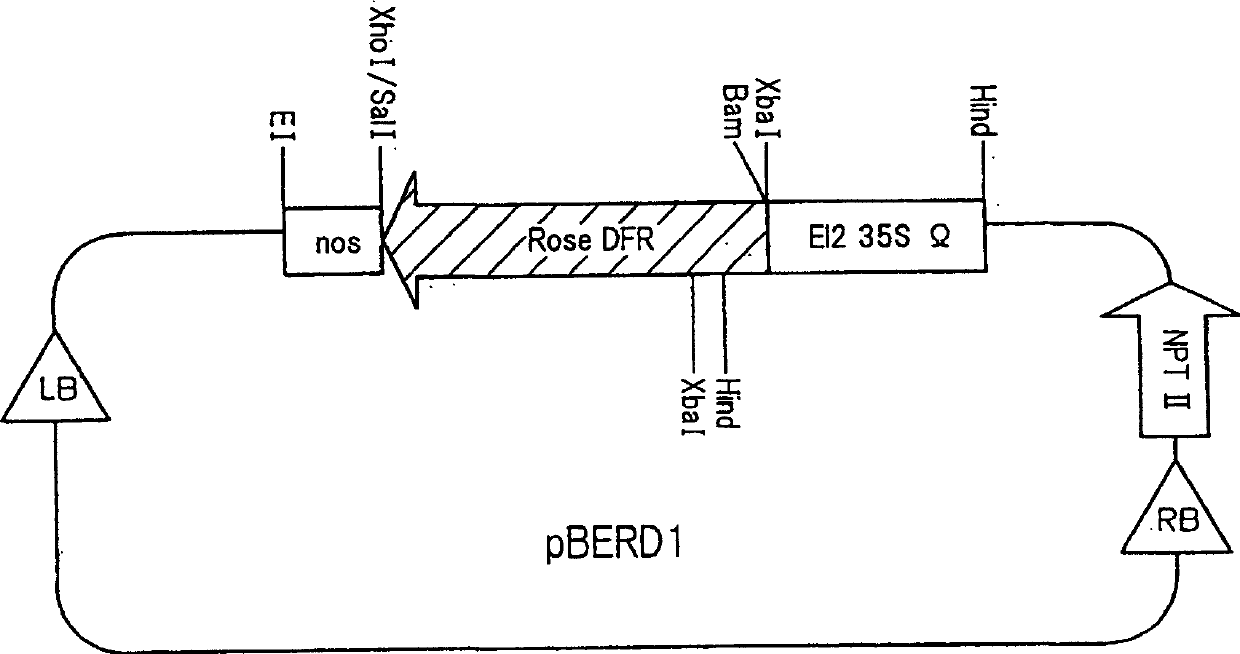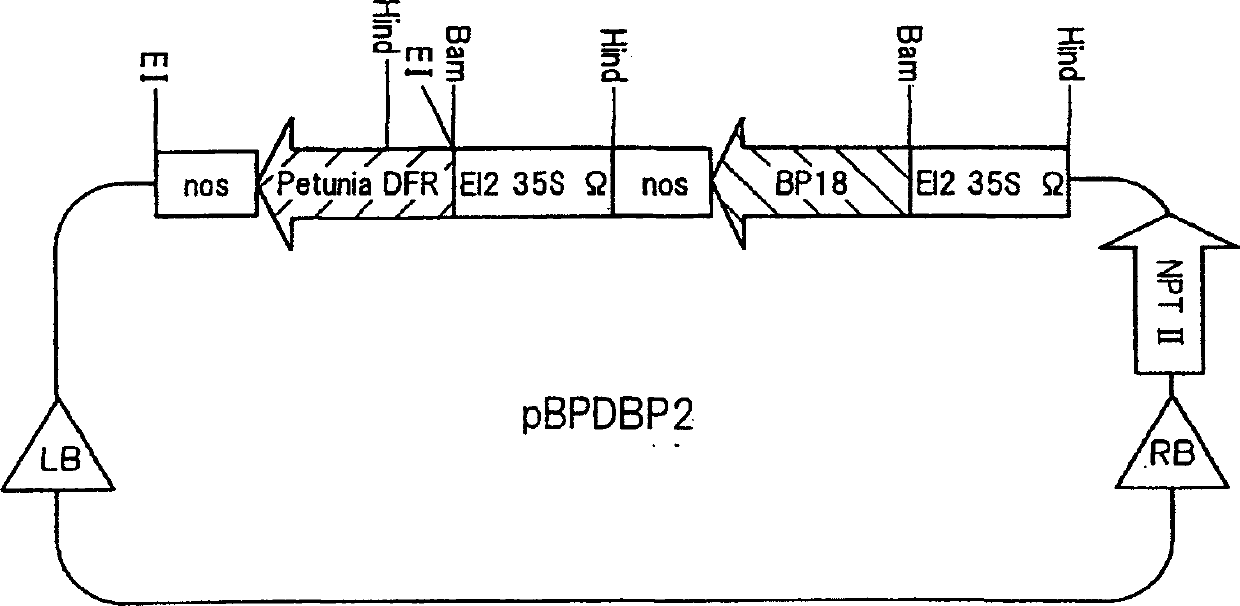Process for producing rose with modified color
一种制造方法、蔷薇的技术,应用在蔷薇的制造领域,能够解决CHS抑制不完全、未达到完全抑制花色素苷等问题
- Summary
- Abstract
- Description
- Claims
- Application Information
AI Technical Summary
Problems solved by technology
Method used
Image
Examples
Embodiment 1
[0097] Example 1. Flower color measurement method
[0098] The petal color was analyzed using a spectrophotometer CM2022 [MINOLTA Co., Ltd., Japan] 10 degree vision, D65 light source measurement, and the color management software SpectraMagic [MINOLTA Co., Ltd., Japan] was used for analysis. In addition, the Royal Horticultural Society Chromatography Standard (RHSCC) number is based on the chromaticity value (CIE L*a*b* chromaticity system) obtained by visual judgment and the above-mentioned machine measurement, using the color classification system Version 2.1.1 [Japan Research Institute Co., Ltd. (Japan), Japanese Patent Application Publication No. 2002-016935] The approximate color comparison was performed. By using this system, an approximate RHSCC number can be selected objectively.
[0099] Using this method to measure the chromaticity of the petals of the so-called "blue rose" variety in the past, when calculating the approximate color in RHSCC, Blue Moon and Madame Violet ...
Embodiment 2
[0100] Example 2. Analysis of Flavonoids
[0101] 1) Extraction of petal pigment
[0102] Put 0.5g of freeze-dried petals in 50% acetonitrile (CH 3 CN), after 20 minutes of ultrasonic extraction, and then filter with a 0.45μm filter. The high performance liquid chromatography (HPLC) analysis conditions of the anthocyanin of this extract are as follows. The chromatographic column uses RSpakDE-413L (4.6mmφ×25cm, Zhaogong Co., Ltd.), the flow rate is 0.6ml / min, and the mobile phase is CH containing 0.5% trifluoroacetic acid (TFA) 3 CN / H 2 O, 10%-50% linear concentration gradient 15 minutes later, use 50% CH containing 0.5% TFA 3 CN / H 2 O performs isocratic elution for 10 minutes. For detection, a photodiode array (PHOTODIODE ARRAY) detector SPD-M10A (Shimadzu Corporation) was used to detect the wavelength range of 600-250 nm, and the ratio of each anthocyanin was calculated from the area of absorbance at 520 nm.
[0103] 2) Analysis of anthocyanin
[0104] Put 0.2ml of the above fi...
Embodiment 3
[0109] Example 3. Determination of DH value
[0110] Approximately 2 g of rose petals frozen at -80°C for 1 hour or more are squeezed with a homogenizer to obtain a squeezed juice. The pH was measured with a pH meter (F-22, Horiba Manufacturing Co., Ltd.) connected to a microelectrode 6069-10C (Horiba Manufacturing Co., Ltd.).
PUM
 Login to View More
Login to View More Abstract
Description
Claims
Application Information
 Login to View More
Login to View More - R&D
- Intellectual Property
- Life Sciences
- Materials
- Tech Scout
- Unparalleled Data Quality
- Higher Quality Content
- 60% Fewer Hallucinations
Browse by: Latest US Patents, China's latest patents, Technical Efficacy Thesaurus, Application Domain, Technology Topic, Popular Technical Reports.
© 2025 PatSnap. All rights reserved.Legal|Privacy policy|Modern Slavery Act Transparency Statement|Sitemap|About US| Contact US: help@patsnap.com



